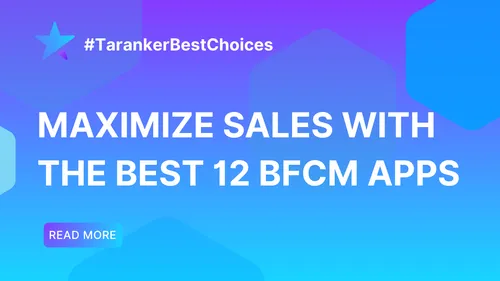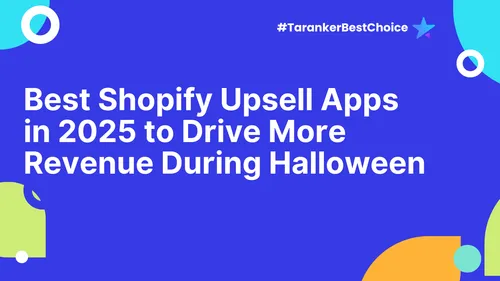In the competitive world of e-commerce, ensuring your Shopify store is optimized for search engines is crucial. By fine-tuning your product listings, you can boost your visibility on search engines like Google, drive more traffic to your site, and ultimately increase sales. In this guide, we’ll walk you through seven essential steps to optimize your Shopify product listings for SEO.
Why SEO Matters for Your Shopify Store

Search Engine Optimization (SEO) is a critical aspect of running a successful Shopify store. It ensures that your products are visible to potential customers searching online. Without proper SEO, your products may not appear in search results, limiting your store’s exposure and potential sales.
Step 1: Set Up Your Homepage SEO
Start by going to your Shopify admin panel. Navigate to ‘Online Store,’ then ‘Preferences.’ Here, you can set your title and meta description for your homepage. These elements are essential for search engines to understand what your site is about, so be sure to include your primary keywords naturally. This simple step can significantly improve your site’s visibility on search engines.
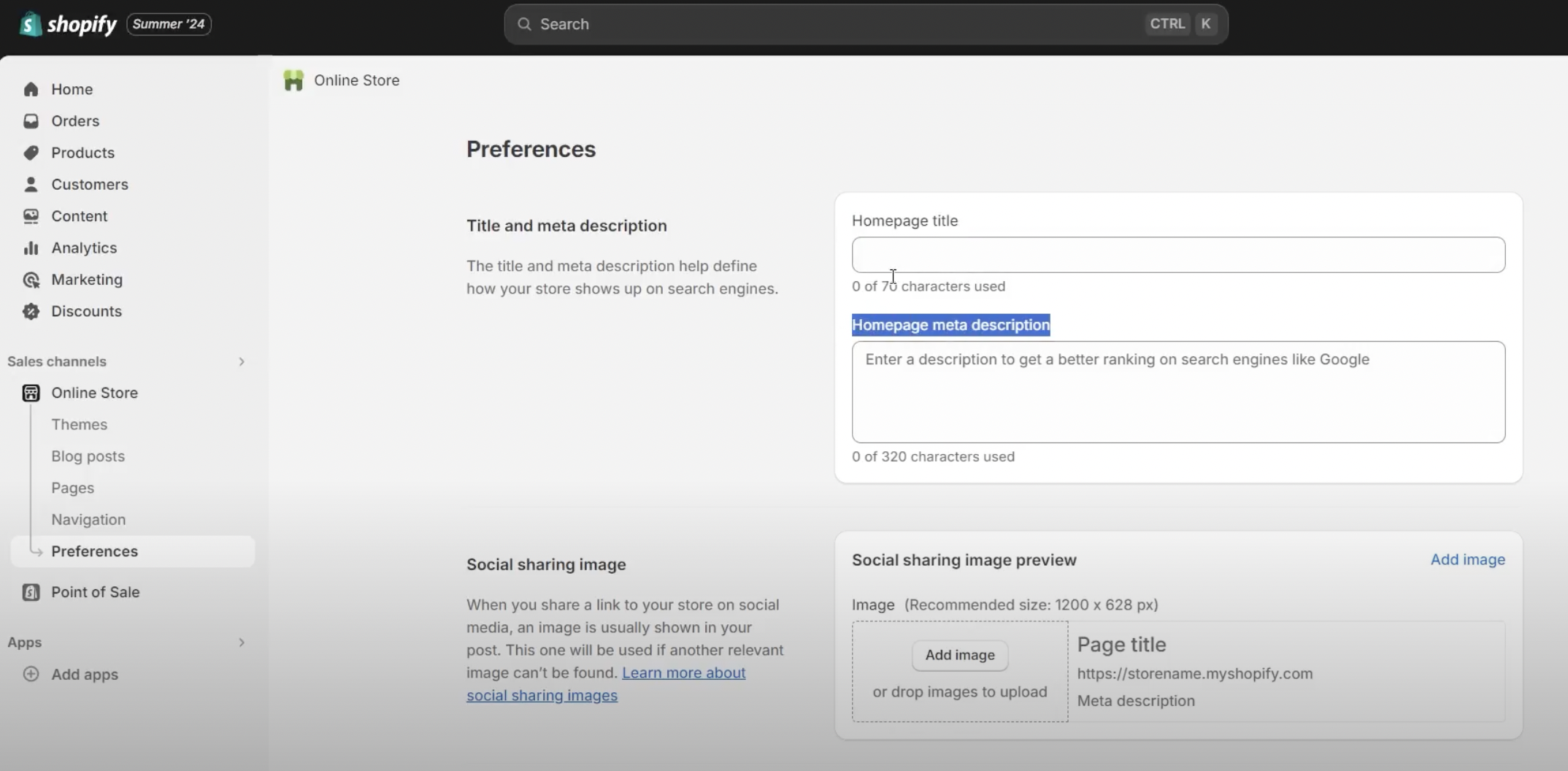
Step 2: Optimize Your Product Titles and Descriptions
Your product titles and descriptions are key to SEO success. Titles should be clear and include relevant keywords. For instance, instead of a generic title like “Cool T-Shirt,” opt for something more descriptive like “Men’s Cool Graphic T-Shirt - Summer Collection.”
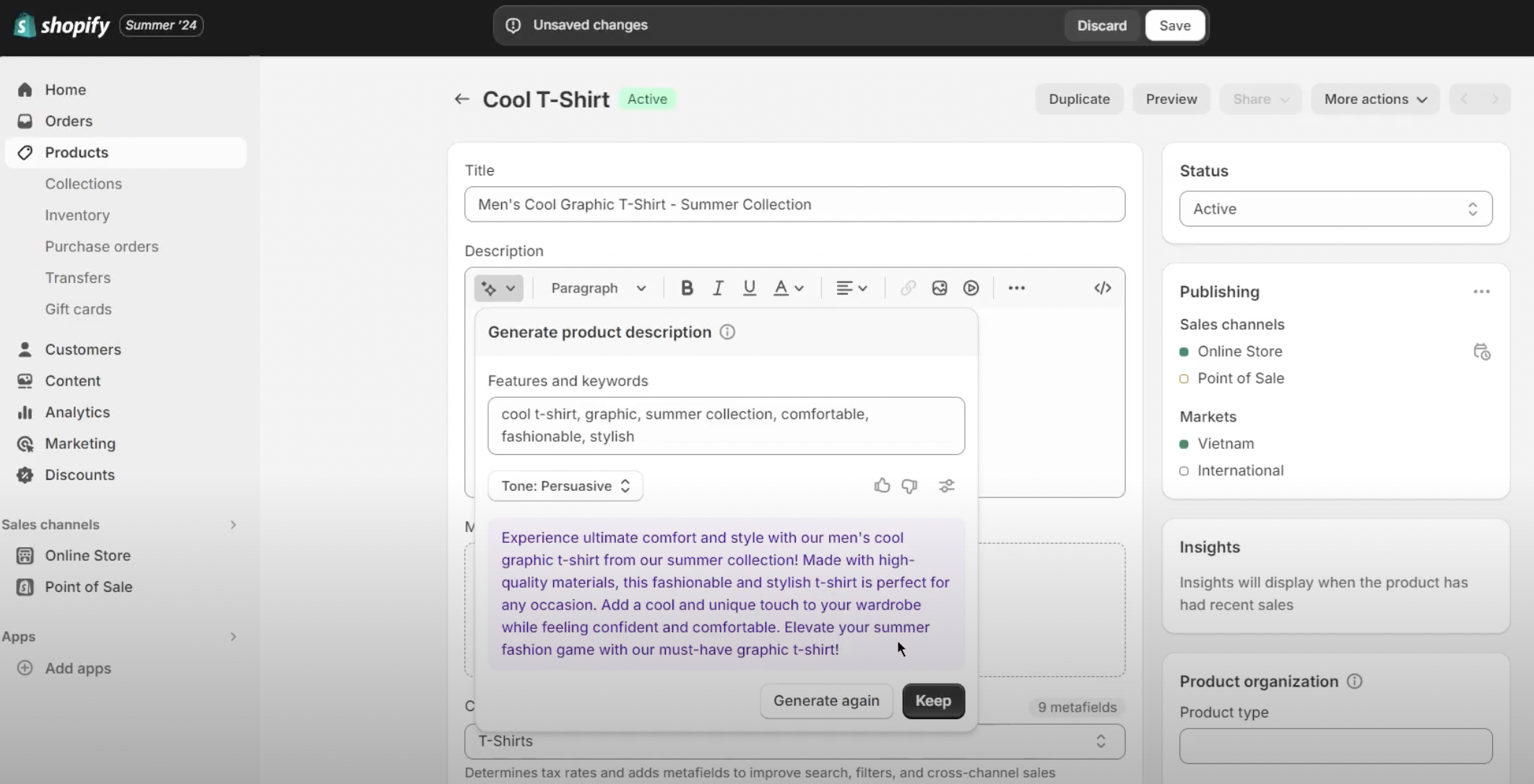
When writing product descriptions, make them detailed and engaging while naturally incorporating keywords. Highlight the benefits and features of your products, but avoid keyword stuffing. Ensuring that your content is easy to read will not only help with SEO but also improve the shopping experience for your customers.
Step 3: Enhance Image SEO with Alt Text
Images play a significant role in product listings, and optimizing them can improve your SEO. Make sure to add descriptive alt text to each image. Alt text helps search engines understand the content of the image, which can boost your SEO ranking. For example, instead of using a generic file name like “IMG1234,” you could use “Men’s Graphic T-Shirt - Blue.”

To add alt text, go to your product page, click on an image, and enter the alt text in the provided field. This small step can make a big difference in how your images rank in search results.
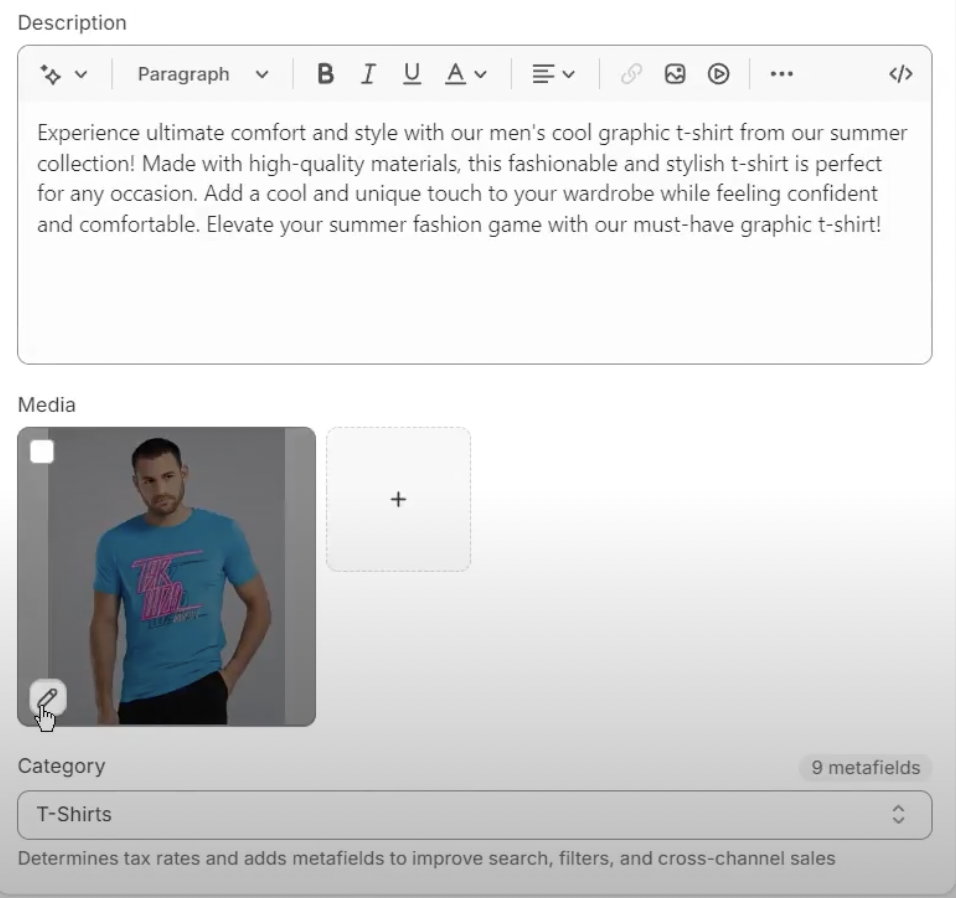
Step 4: Leveraging Taranker for SEO Apps
Enhance your SEO efforts by using SEO apps from the Shopify App Store. Taranker offers comprehensive reviews and comparisons of various SEO apps to help you make an informed decision.
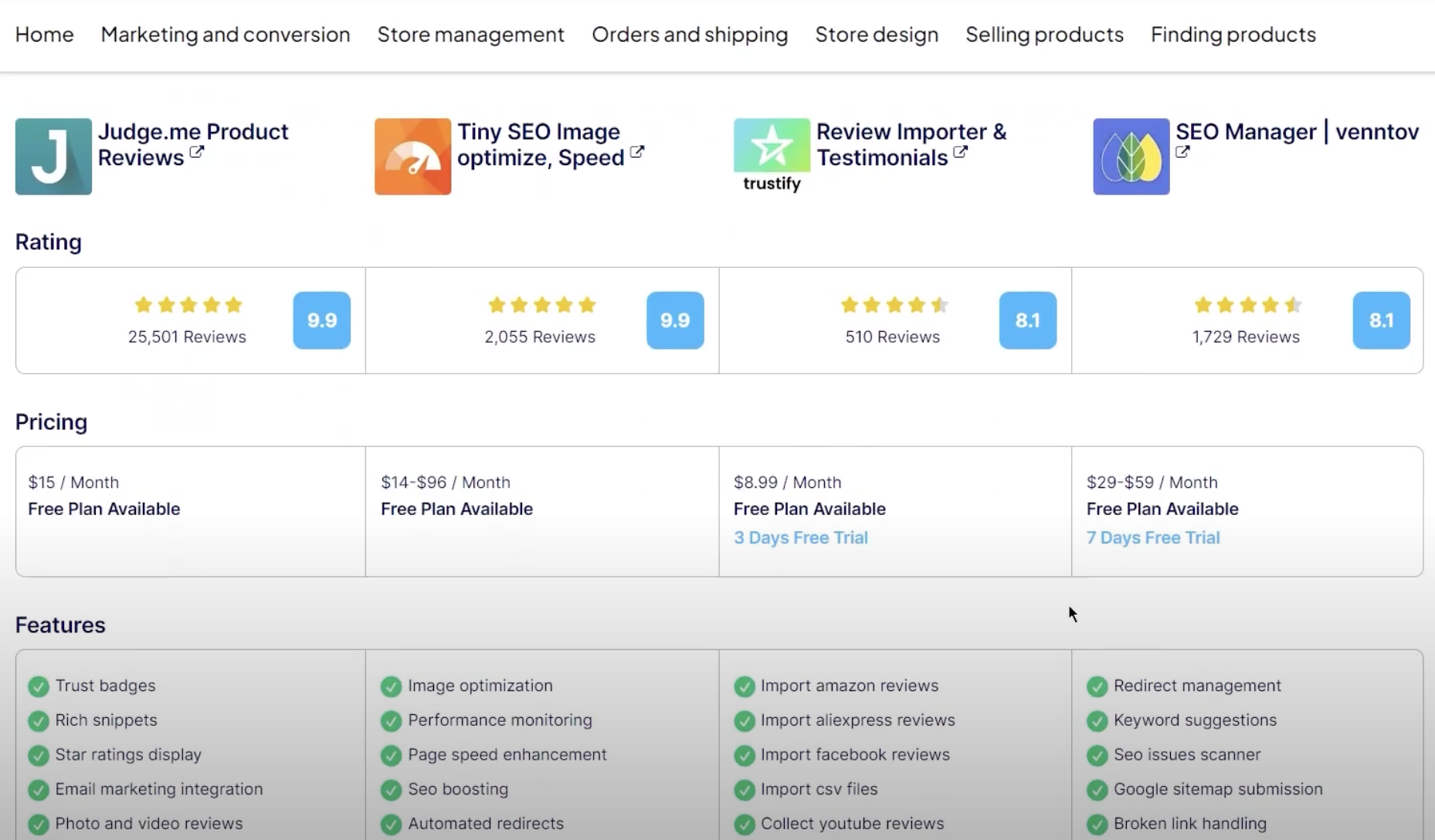
Visit taranker.com and navigate to the ‘Shopify SEO Apps’ category. Explore the ‘Top Free Apps,’ ‘Top 20 Apps 2025,’ and ‘Best Apps’ lists. Use the ‘Compare’ feature to evaluate different apps based on user reviews and detailed comparisons.
Once you’ve selected the SEO app that fits your needs, install it through the Shopify App Store to start optimizing your store.
Step 5: Installing and Using an SEO App
Let’s install an SEO app from the Shopify App Store. For this example, we’ll use ‘SEO Manager.’
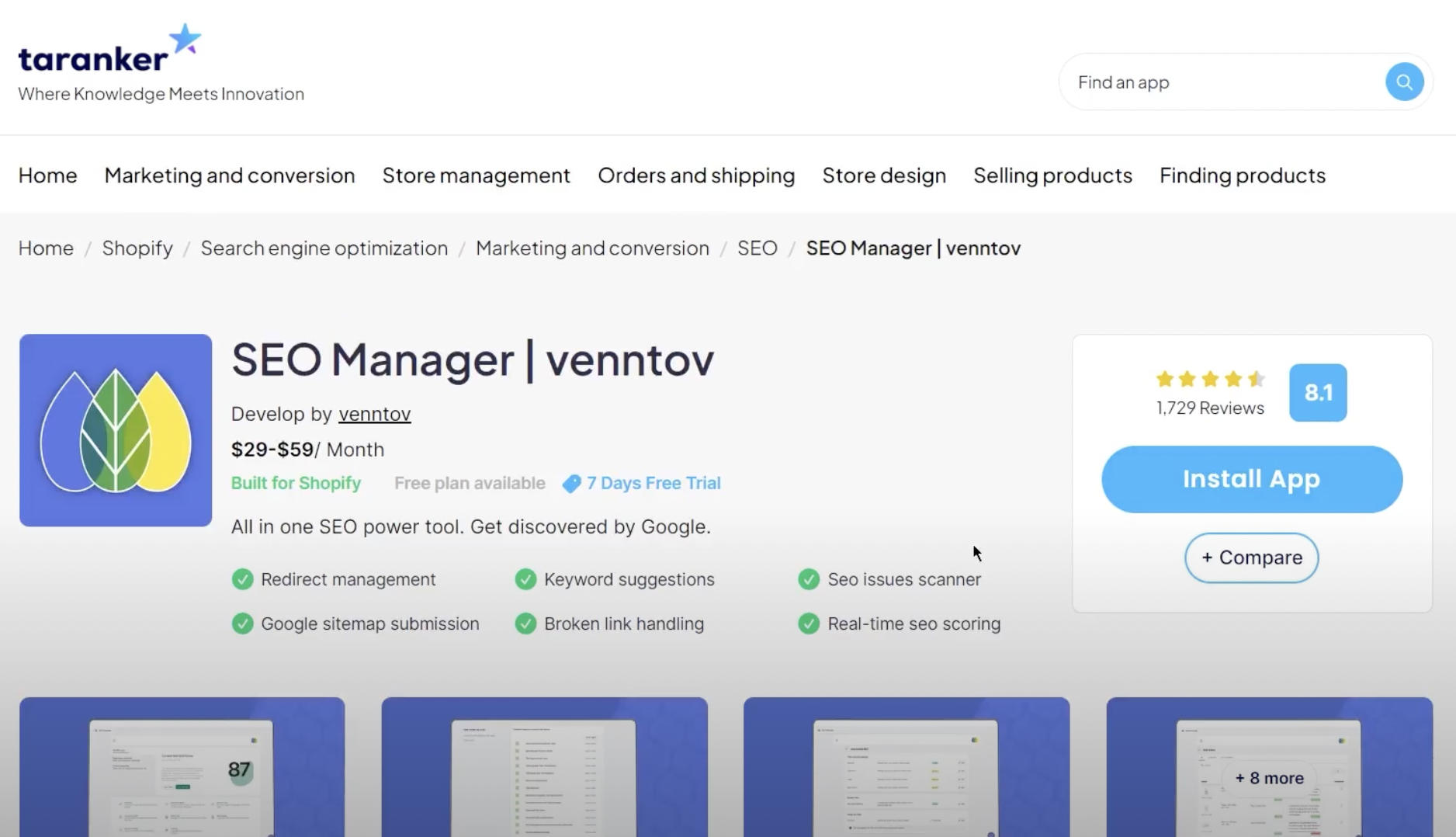
Search for ‘SEO Manager’ on Taranker, click ‘Install app,’ and follow the prompts to install it. Once installed, open the app and connect it to your Shopify store. SEO Manager offers tools like keyword suggestions, meta-tag editing, and more to help you optimize your store.
Step 6: Clean Up Your URLs
Optimizing your product URLs is another critical step in improving your SEO. Make sure your URLs are clean and concise, and include your main keywords. Instead of a vague URL like “product1234,” use something more descriptive like “mens-cool-graphic-tshirt.”
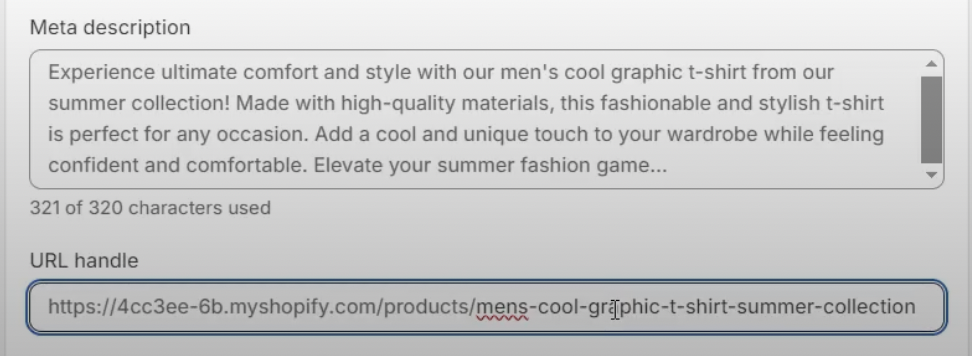
To update your URLs:
1. Go to your product page.
2. Scroll down to the ‘Search engine listing preview.’
3. Click ‘Edit website SEO’ and adjust the URL to be keyword-rich and user-friendly.
This change helps both search engines and users understand what the page is about, making it easier to find.
Step 7: Monitoring Your SEO Performance
Once your SEO optimizations are in place, it’s crucial to monitor their effectiveness. Tools like Google Analytics and the SEO apps you’ve installed can help you track key metrics such as traffic sources, keyword performance, and conversion rates. Regularly reviewing this data will help you understand what’s working and where there might be room for improvement.
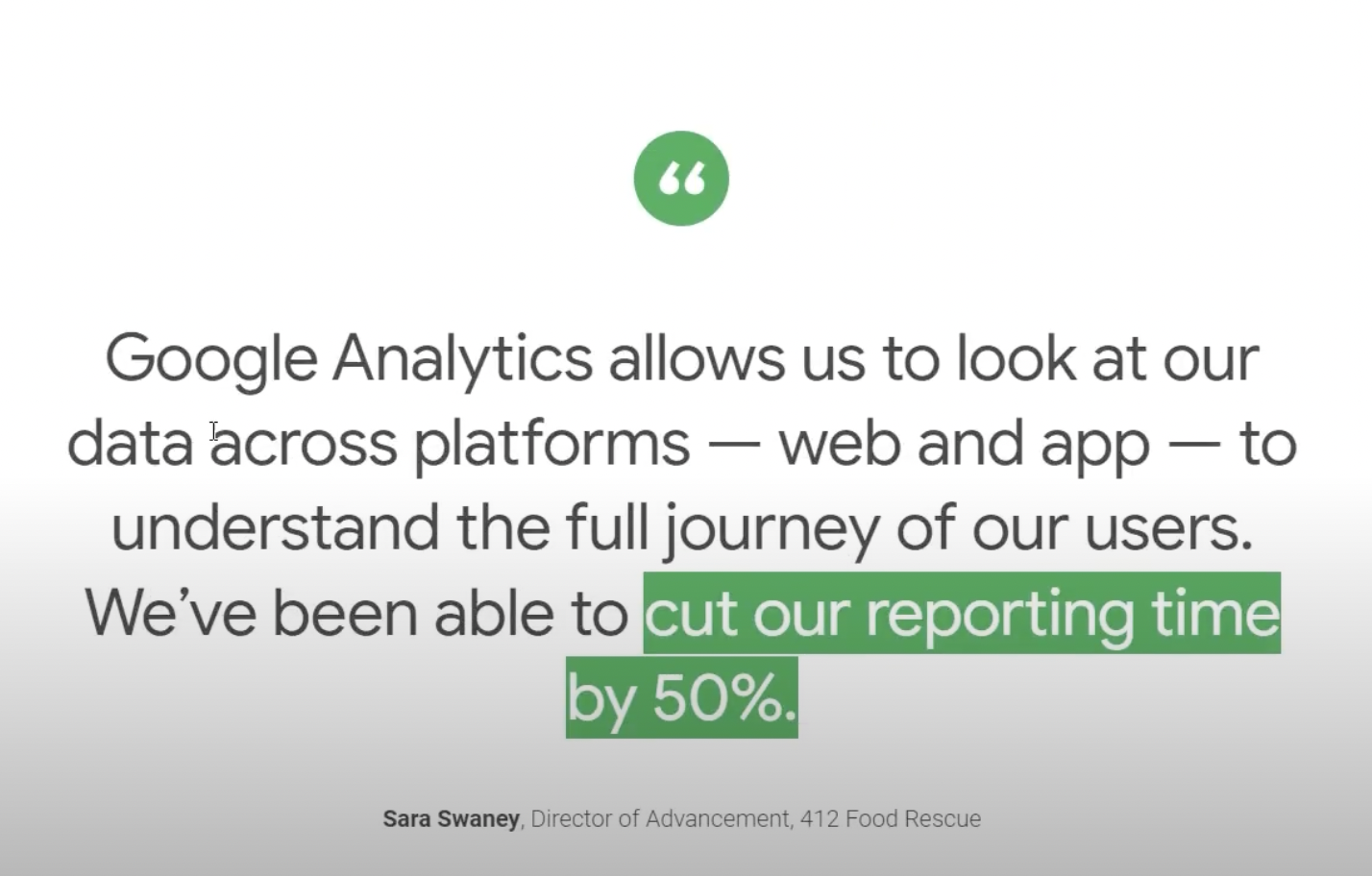
SEO is not a one-time task but an ongoing process. Regularly update your product listings with fresh content and new keywords to stay ahead of the competition. As search engine algorithms and consumer trends evolve, so should your SEO strategies. Keep testing different keywords and content approaches to find what works best for your store.
FAQs
1. What is the most important SEO factor for product listings?
• Product titles and descriptions are the most crucial SEO factors. They should be clear, keyword-rich, and provide value to the customer.
2. How often should I update my SEO strategy?
• It’s advisable to review and update your SEO strategy quarterly. However, any significant changes in trends or search engine algorithms should prompt an immediate review.
3. Can I use the same keywords for multiple products?
• Yes, but it’s important to ensure that each product listing is unique. Using the same keywords across multiple listings can be effective, but avoid duplicate content as it can harm your SEO ranking.
4. How can I track the success of my SEO efforts?
• Use tools like Google Analytics and SEO apps to monitor traffic, conversion rates, and keyword performance. Regularly review these metrics to gauge the success of your SEO strategy.
5. Are Shopify’s built-in SEO features enough?
• Shopify’s built-in SEO features provide a solid foundation, but using additional SEO apps can enhance your efforts, especially for more competitive niches.
Conclusion
Optimizing your Shopify product listings for SEO is crucial for improving your store’s visibility and driving traffic. By following these seven steps and regularly updating your strategy, you can ensure that your products stand out in search results and attract more customers.
Watch this video for more information:

